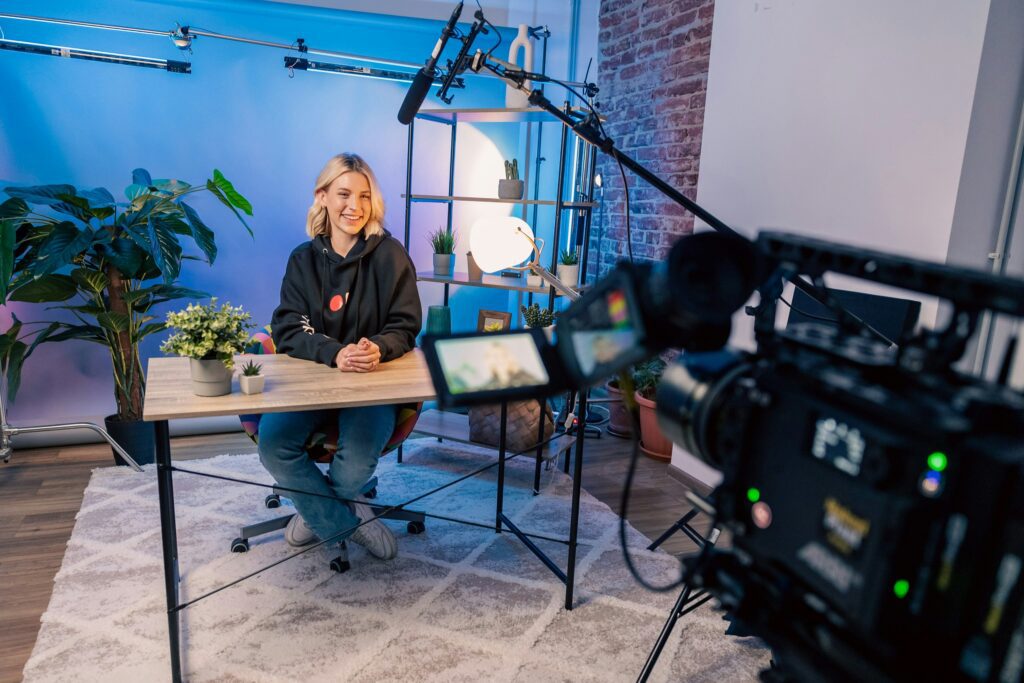The term ‘content marketing’ refers to the use of online materials and digital assets to generate interest, attract clients, and promote a business. In addition to coming up with topic ideas (which we cover in our blog post here), there are also other types of content and formats to consider.
The amount of marketing you do is usually proportionate to your potential income, so showing up and being consistent with your online marketing is important. Your marketing efforts also need to reach the right audience on the right platforms to be effective.
When you use a variety of content formats, you have more opportunities to reach a larger audience. For example, someone might not see your latest social media post, but they might listen to a podcast episode you’ve produced (or guested on) while they are at the gym. However, there may be some formats that are simply not applicable to your business. For example, your business may lend itself better to visual demonstrations (think fitness instructor) rather than purely audio.
With this in mind, here are 7 content marketing formats to consider for your small businesses.
1. Short demo videos
Showing people how your product or service works is a great way to market your business and educate your user base and/or clients. For example, for service-based providers, you can guide clients through your onboarding process, whereas for products, helpful how-to videos and walkthroughs are more effective.
At Invoice Ninja, we have tutorials on our YouTube channel that cover our free invoicing software’s features and setups. You can also view short demo videos that guide you through our features here.
Try Invoice Ninja for free here.
2. Behind-the-scenes content
Behind-the-scenes content can showcase the human side of your business, your unique processes, and highlight your origin story and progress to date.
For example, if you are an artist, you can share the stages you go through from a blank canvas to a finished painting on Instagram. If you are a service provider, you can share the processes you follow to deliver a top-notch service to your clients. You can do this via various formats such as video, an infographic, or a blog post.
You can then share this content across your social media channels and/or add it to your website.
3. Blog posts for search traffic
SEO-optimized blog posts are a great way to attract search traffic to your website, cultivate your brand’s voice, and position your brand.
Blog posts can answer the questions your ideal audience is searching for online, as well as educate and entertain. You can also share blog posts on your social media channels. Helpful content also builds trust, so visitors will return to your website if they want to know more about a subject.
One of the great benefits of blog posts is that they can continue to attract traffic in the long term. Your blog posts can also include a Call To Action (CTA) to try out your product, sign up for your email newsletter, or contact you directly.
4. Podcasts
Podcasts are a great way to discuss topics relevant to your audience or industry, to story tell and even establish yourself as a thought leader in your industry.
Whether you start a podcast yourself or are a guest on someone else’s, podcasts are a popular and effective way to get your brand out there and have your name recognized. What’s more, audio is more portable, so people can listen to podcasts at their convenience and on the move, for example, while cooking, doing household chores, or driving.
5. Case studies and testimonials
Once you’ve received your glowing testimonial and put together your winning case study, don’t forget to make good use of them.
You can add them to your website and share them on social media – but don’t stop there. You can also add links to them in client correspondence. For example, if you are producing a quote for a new client, linking to a relevant case study and your client testimonials may be the tipping point that makes them hire you over your competitors. Visual evidence is compelling, too; therefore, if you have video reviews or testimonials, use them as well.
6. Short-form videos
Short-form videos are popular on many social media platforms. They are a great way to showcase your personal brand, convey your message quickly, and share valuable tips.
What’s more, you don’t need any fancy or costly equipment; you can simply record something on your smartphone to share. In any event, many social media platforms offer free filters and features to enhance your videos. Short-form videos on platforms like TikTok and Instagram can provide an authentic glimpse into your personal brand.
7. Email newsletter
An email newsletter allows you to stay in contact and connected with your audience. For example, if someone lands on your website and wants to hear more from you, you can get them to subscribe to your email newsletter. You can share helpful tips, industry news, your latest blog posts and products and also offer discounts to your email newsletter subscribers.
You can get website visitors to sign up to your email newsletter by adding a CTA to your blog posts, as mentioned earlier, or offering a lead magnet in return for their email address.
A lead magnet is something (usually free) that you offer to your potential clients. It usually comes in e-format, such as an e-book, and can cover all sorts of things, including a how-to guide, toolkit, recipes, templates, and video training. It can be anything that is helpful and relevant to your audience.
You can also include a link to your newsletter in your social media bios and email signature.
Read more about the benefits of email marketing for freelancers and small businesses here.
~
Finally, creating content daily can be overwhelming and time-consuming, and working this way doesn’t allow for freelancer vacations or time off. That’s why it’s a good idea to batch-create content in advance, especially if you know you’ll be going on vacation.
Planning content also means you can plan ahead for seasonal content (for example, holidays and national or global events).
And don’t forget, you can also repurpose content into different formats, so a blog post can become a video, a podcast script can be repurposed and condensed into a blog, and so on.



